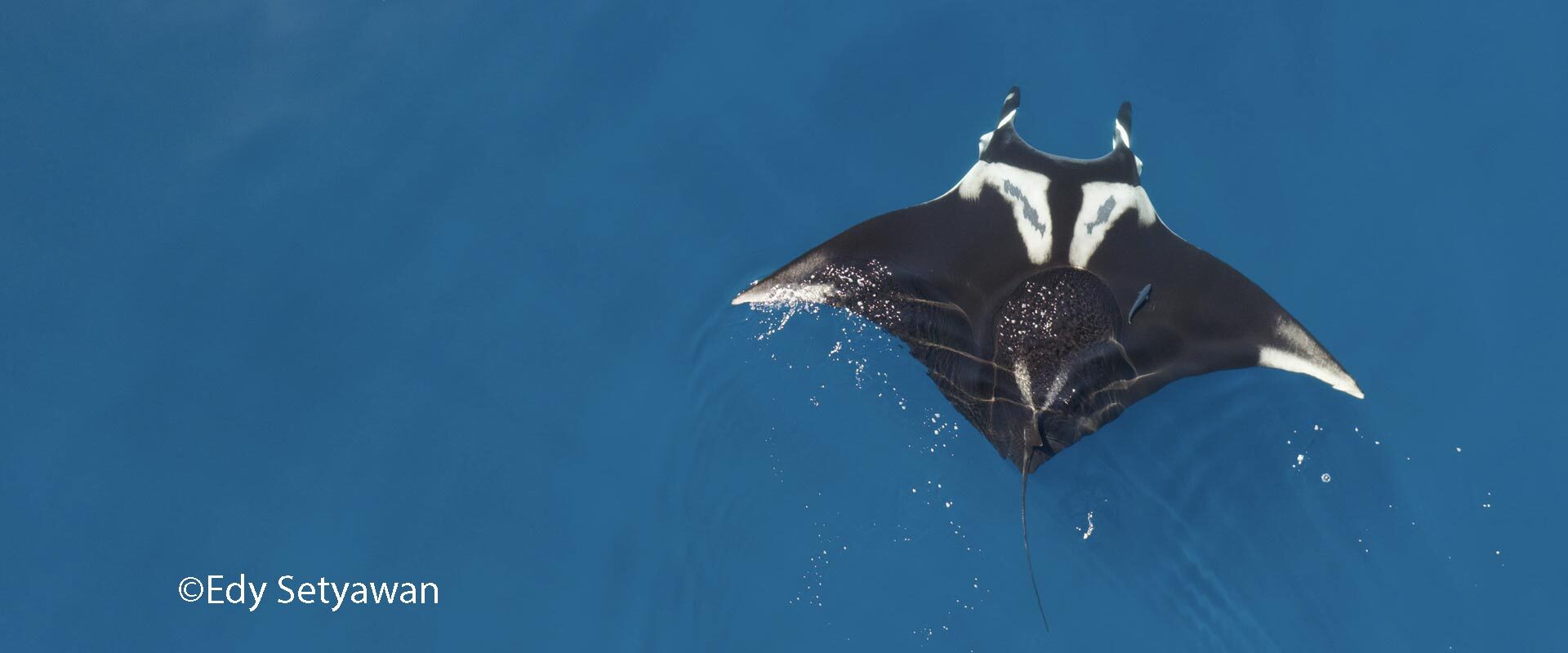Insights into the visitations of oceanic manta rays at cleaning stations on coral reefs in the Bird’s Head Seascape, eastern Indonesia by Edy Setyawan and others
Administrators note: This study was published on August 27, 2024 in Frontiers in Fish Science. It is shared with permission by the authors.
This study represents the first in the Indo-West Pacific to provide insights into the visitations and use of shallow coastal waters on coral reefs by oceanic manta rays, which are generally thought to spend the majority of their time in oceanic environments and deep waters. It highlights the utility of passive acoustic telemetry in tracking the presence and movements of oceanic manta rays visiting cleaning stations on coral reefs in the BHS, suggesting this methodology may also be useful in other coral reef areas which oceanic manta rays are known to frequent.
The globally endangered oceanic manta ray Mobula birostris is believed to spend significantly more time in the open ocean than in coastal areas. Nonetheless, the Bird’s Head Seascape (BHS) in eastern Indonesia hosts a large population of this species (over 850 individuals), frequently sighted at coral reef cleaning stations and forming a vital asset for marine tourism in the region. Despite this, detailed understanding of the movements and habitat use of this wide-ranging species within shallow(<30m) coral reef ecosystems remains limited. Addressing this knowledge gap is urgently required for the sustainable management of oceanic manta ray-focused tourism in the region. Here, we report the results of an initial passive acoustic telemetry study investigating the use of coral reef cleaning stations by oceanic manta rays.
A comprehensive understanding of the movements and habitat use of marine megafauna is critical to the success of efforts to conserve and manage them. The oceanic manta ray Mobula birostris (Walbaum, 1792), which was recently uplisted to Endangered (EN) on the IUCN Red List of Threatened Species, is distributed circumglobally in tropical to temperate waters. This wide-ranging species is considered highly migratory and is known to undertake long-distance movements of up to 1,500 km in the eastern tropical Pacific and southwestern Pacific.
To read the entire study follow this link, Insights into the visitations of oceanic manta rays at cleaning stations on coral reefs in the Bird’s Head Seascape, eastern Indonesia.
Dr. Edy Setyawan is the co-founder and Senior Conservation Scientist of the Elasmobranch Institute Indonesia.








































